Integrated Optimization of Structure and Control for Fast Steering Mirrors
Abstract
:1. Introduction
- (i)
- To ameliorate the optimization efficiency, the FSM structure parameters and controller parameters are combined to optimize simultaneously.
- (ii)
- The multi-objective optimization algorithm is a superior solution when considering multiple mutually exclusive indicators among the structure parameters and controller parameters. Therefore, this study attempts to solve the parameter tuning problem by using a multi-objective optimization algorithm and constructs a non-dominated sorting genetic algorithm II(NSGA-II). By considering the indices with first-order resonant frequency, second-order resonant frequency, and working bandwidth of the system, the final values of the structure parameters and controller parameters can be obtained.
- (iii)
- By using this method, the working bandwidth of the FSM is increased while suppressing the first-order resonance of the system.
2. Structure Design, Modeling, and Analysis
2.1. Structural Design and Working Principle
2.2. Flexure Support Design for Bandwidth Consideration
3. Co-Simulation
4. Optimization of Structure and Control
4.1. PID Control for FSM
4.2. Multi-Objective Optimization Problem
4.3. NSGA-II for FSM Controller and Structure Parameters
4.3.1. Maximum Stress Constraint
4.3.2. Inequality Constraints on Kinematic Accuracy of Flexible Hinges
4.3.3. Basic Idea of ISOC
5. Simulation and Results
6. Conclusions
Author Contributions
Funding
Data Availability Statement
Conflicts of Interest
Appendix A
Routh Criterion
References
- Li, M.; Chen, M.; Yang, Y.; Sun, Z.; Li, J.; Wang, Y.; Chen, X. Effect of Amplifier Spontaneous Emission Noise on Performance of Space Chaotic Laser Communication Systems. IEEE J. Quantum Electron. 2021, 57, 1–8. [Google Scholar] [CrossRef]
- Perez-Arancibia, N.O.; Gibson, J.S.; Tsao, T.C. Observer-based intensity-feedback control for laser beam pointing and tracking. IEEE Trans. Control Syst. Technol. 2011, 20, 31–47. [Google Scholar] [CrossRef]
- Liao, S.K.; Cai, W.Q.; Liu, W.Y.; Zhang, L.; Li, Y.; Ren, J.G.; Yin, J.; Shen, Q.; Cao, Y.; Li, Z.P.; et al. Satellite-to-ground quantum key distribution. Nature 2017, 549, 43–47. [Google Scholar] [CrossRef]
- Gaffard, J.P.; Boyer, C. Adaptive optics: Effect of sampling rate and time lags on the closed loop bandwidth. In Adaptive Optics and Optical Structures, Proceedings of the International Society for Optical Engineering, Hague, The Netherlands, 12–16 March 1990; SPIE: Bellingham, WA, USA, 1990; Volume 1271, pp. 33–50. [Google Scholar] [CrossRef]
- Csencsics, E.; Schitter, G. System design and control of a resonant fast steering mirror for lissajous-based scanning. IEEE/ASME Trans. Mechatron. 2017, 22, 1963–1972. [Google Scholar] [CrossRef]
- Zhu, W.; Bian, L.; An, Y.; Chen, G.; Rui, X. Modeling and control of a two-axis fast steering mirror with piezoelectric stack actuators for laser beam tracking. Smart Mater. Struct. 2015, 24, 075014. [Google Scholar] [CrossRef]
- Zheng, Y.; Zhang, G.; Xu, B.; Jiang, W. Bandwidth improvement of fast steering mirror by FEDA. In Proceedings of the 2006 1st IEEE International Conference on Nano/Micro Engineered and Molecular Systems, Zhuhai, China, 18–21 January 2006; pp. 52–55. [Google Scholar] [CrossRef]
- Kluk, D.J.; Boulet, M.T.; Trumper, D.L. A high-bandwidth, high-precision, two-axis steering mirror with moving iron actuator. Mechatronics 2012, 22, 257–270. [Google Scholar] [CrossRef]
- Zhang, W.; Yuan, J.; Yan, C.; Gao, Z.; Dong, Y. Multi-objective optimization design of natural frequency of two-degree-of-freedom fast steering mirror system. IEEE Access 2021, 9, 33689–33703. [Google Scholar] [CrossRef]
- Wu, Q.; Wang, Q.; Peng, Q.; Ren, G.; Fu, C. Wide bandwidth control of fast-steering mirror driven by voice coil motor. Opto-Electron. Eng. 2004, 31, 15–18. [Google Scholar]
- Zhong, J.; Nishida, R.; Shinshi, T. Design and precision tracking control of a high-bandwidth fast steering mirror for laser beam machining. Precis. Eng. 2022, 73, 128–139. [Google Scholar] [CrossRef]
- Xiao, R.; Xu, M.; Shao, S.; Tian, Z. Design and wide-bandwidth control of large aperture fast steering mirror with integrated-sensing unit. Mech. Syst. Signal Process. 2019, 126, 211–226. [Google Scholar] [CrossRef]
- Cao, K.; Hao, G.; Liu, Q.; Tan, L.; Ma, J. Hysteresis modeling and compensation of fast steering mirrors with hysteresis operator based back propagation neural networks. Micromachines 2021, 12, 732. [Google Scholar] [CrossRef] [PubMed]
- Lu, Y.; Fan, D.; Zhang, Z. Theoretical and experimental determination of bandwidth for a two-axis fast steering mirror. Optik 2013, 124, 2443–2449. [Google Scholar] [CrossRef]
- Zhang, Y.; Xu, Y.; Wang, F.; Xu, Y.; Zhou, P. Electromechanical Co-simulation Technology of Fast Steering Mirror Driven by Voice Coil Motor. Infrared Technol. 2023, 45, 814–821. [Google Scholar]
- Duan, Q.; Mao, Y.; Zhang, H.; Xue, W. Add-on integration module-based proportional-integration-derivative control for higher precision electro-optical tracking system. Trans. Inst. Meas. Control 2021, 43, 1347–1362. [Google Scholar] [CrossRef]
- Deng, C.; Mao, Y.; Ren, G. MEMS inertial sensors-based multi-loop control enhanced by disturbance observation and compensation for fast steering mirror system. Sensors 2016, 16, 1920. [Google Scholar] [CrossRef] [PubMed]
- Wu, Y.; Zhou, Z. Design calculations for flexure hinges. Rev. Sci. Instrum. 2002, 73, 3101–3106. [Google Scholar] [CrossRef]
- Udaondo, C.; Collado, C.; Mateu, J. Quasi-3D Model for Lateral Resonances on Homogeneous BAW Resonators. Micromachines 2023, 14, 1980. [Google Scholar] [CrossRef]
- Zhu, H.; He, S.; Wang, X.; Qin, C.; Li, L.; Sun, X. Design and Testing of a Simulator for Micro-Vibration Testing of Star Sensor. Micromachines 2023, 14, 1652. [Google Scholar] [CrossRef]
- Peng, T.; Zhou, J.; Zhang, C.; Sun, N. Modeling and combined application of orthogonal chaotic NSGA-II and improved TOPSIS to optimize a conceptual hydrological model. Water Resour. Manag. 2018, 32, 3781–3799. [Google Scholar] [CrossRef]
- Deb, K.; Pratap, A.; Agarwal, S.; Meyarivan, T. A fast and elitist multiobjective genetic algorithm: NSGA-II. IEEE Trans. Evol. Comput. 2002, 6, 182–197. [Google Scholar] [CrossRef]
- Liu, J.; Li, P.; Zhuang, X.; Sheng, Y.; Qiao, Q.; Lv, M.; Gao, Z.; Liao, J. Design and Optimization of Hemispherical Resonators Based on PSO-BP and NSGA-II. Micromachines 2023, 14, 1054. [Google Scholar] [CrossRef] [PubMed]
- Fu, J.J.; Yan, C.X.; Liu, W.; Yuan, T. Stiffness calculation and optimal design of elliptical flexure hinges. Opt. Precis. Eng. 2016, 24, 1703–1710. [Google Scholar] [CrossRef]
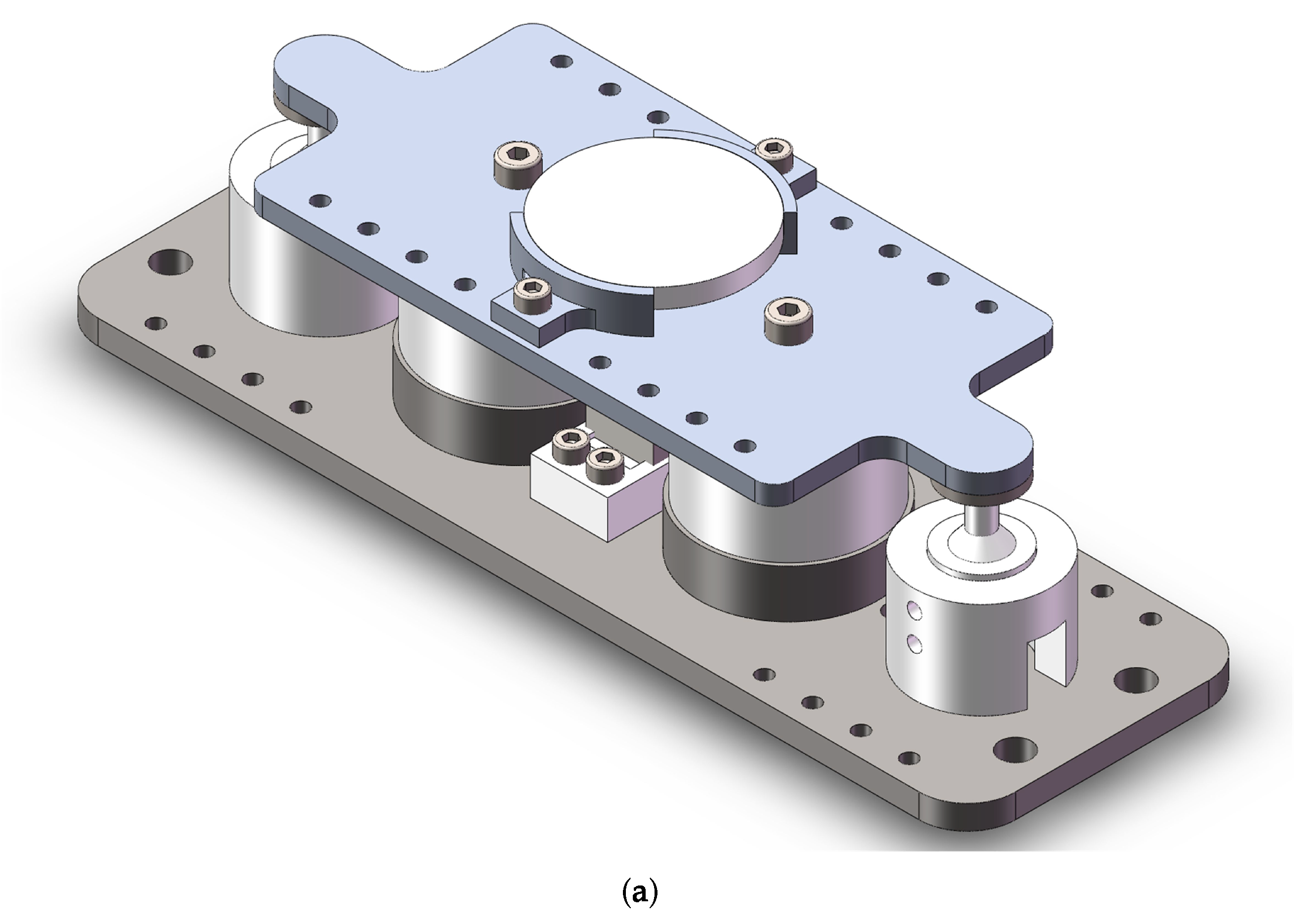
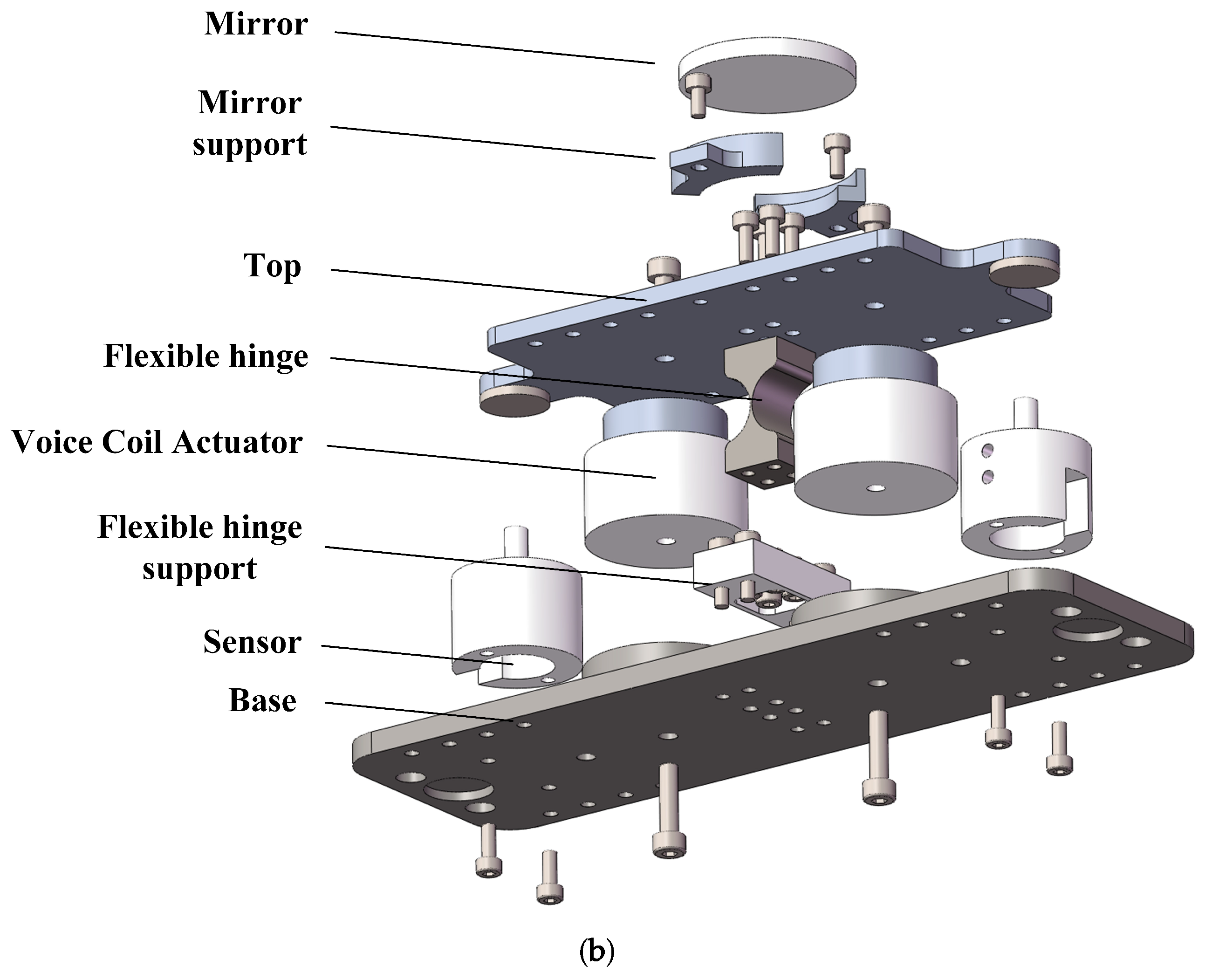


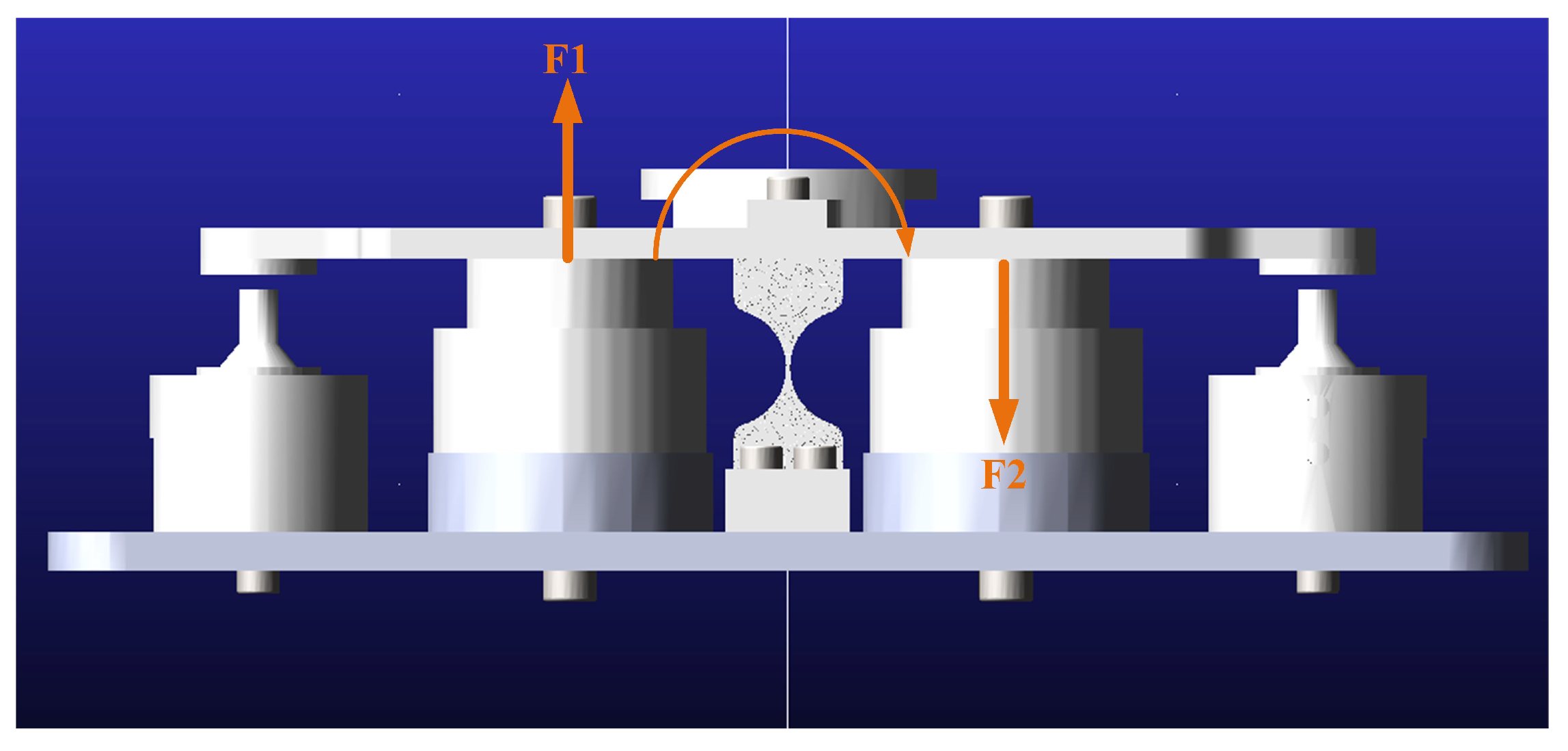

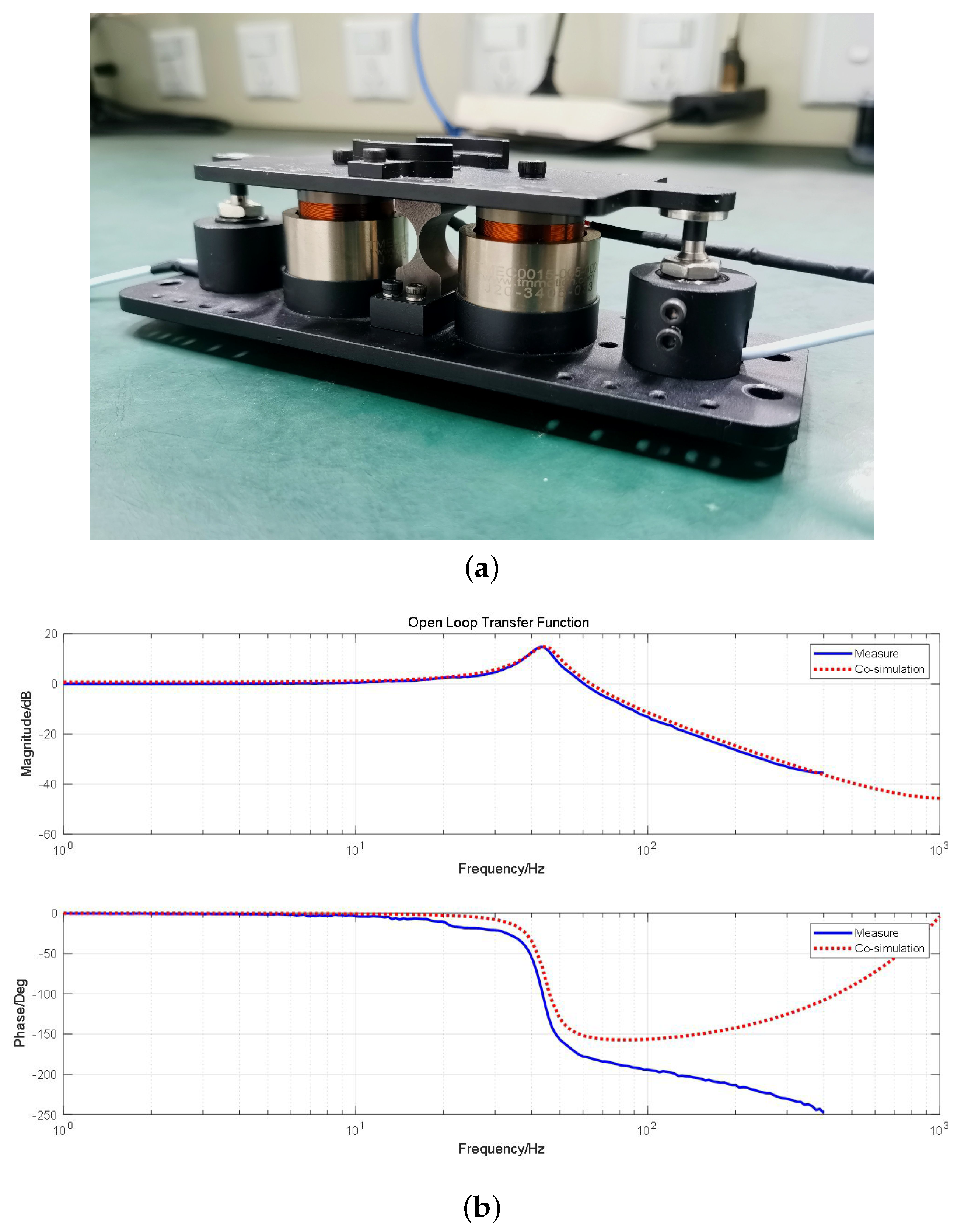
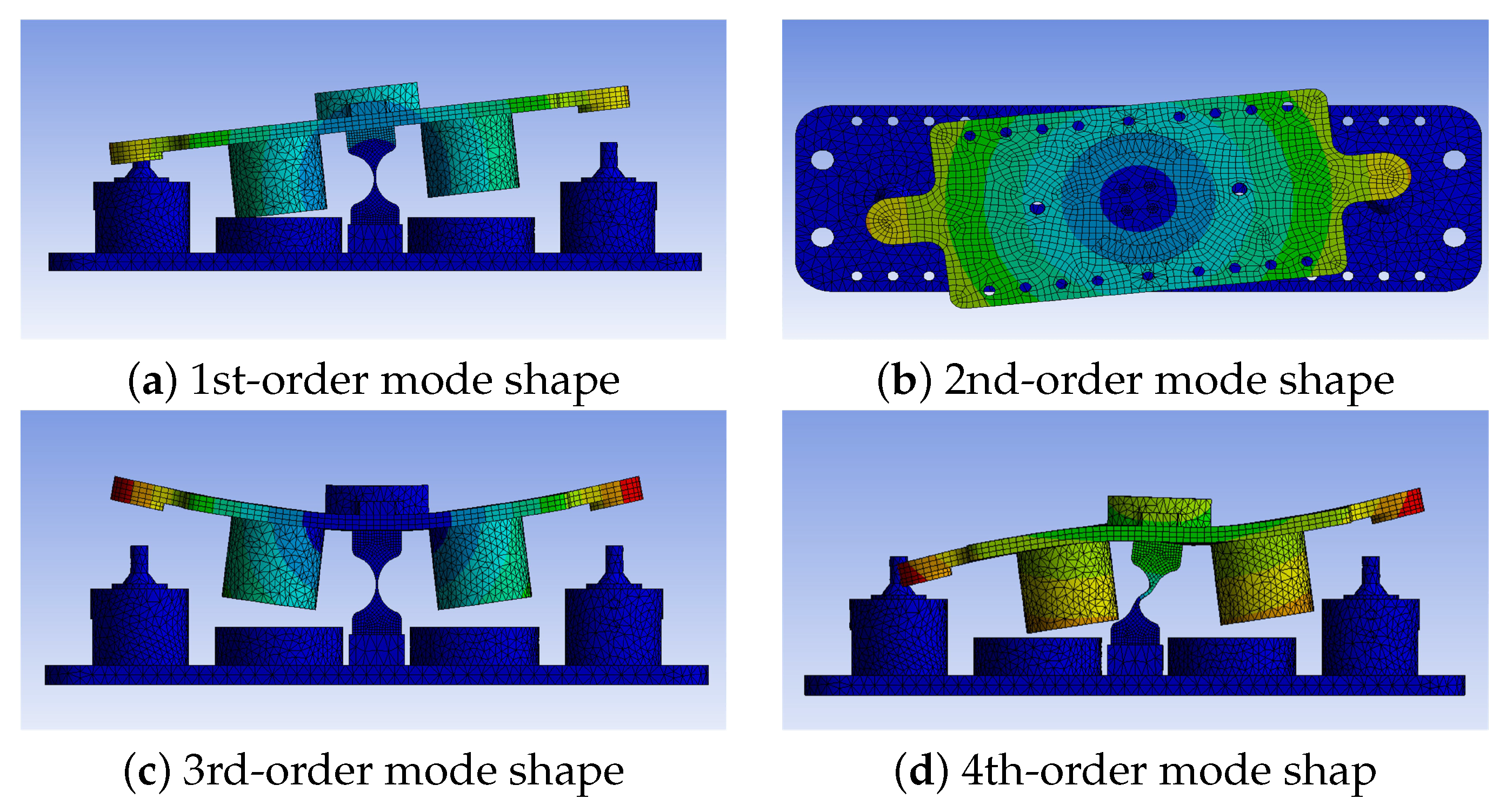
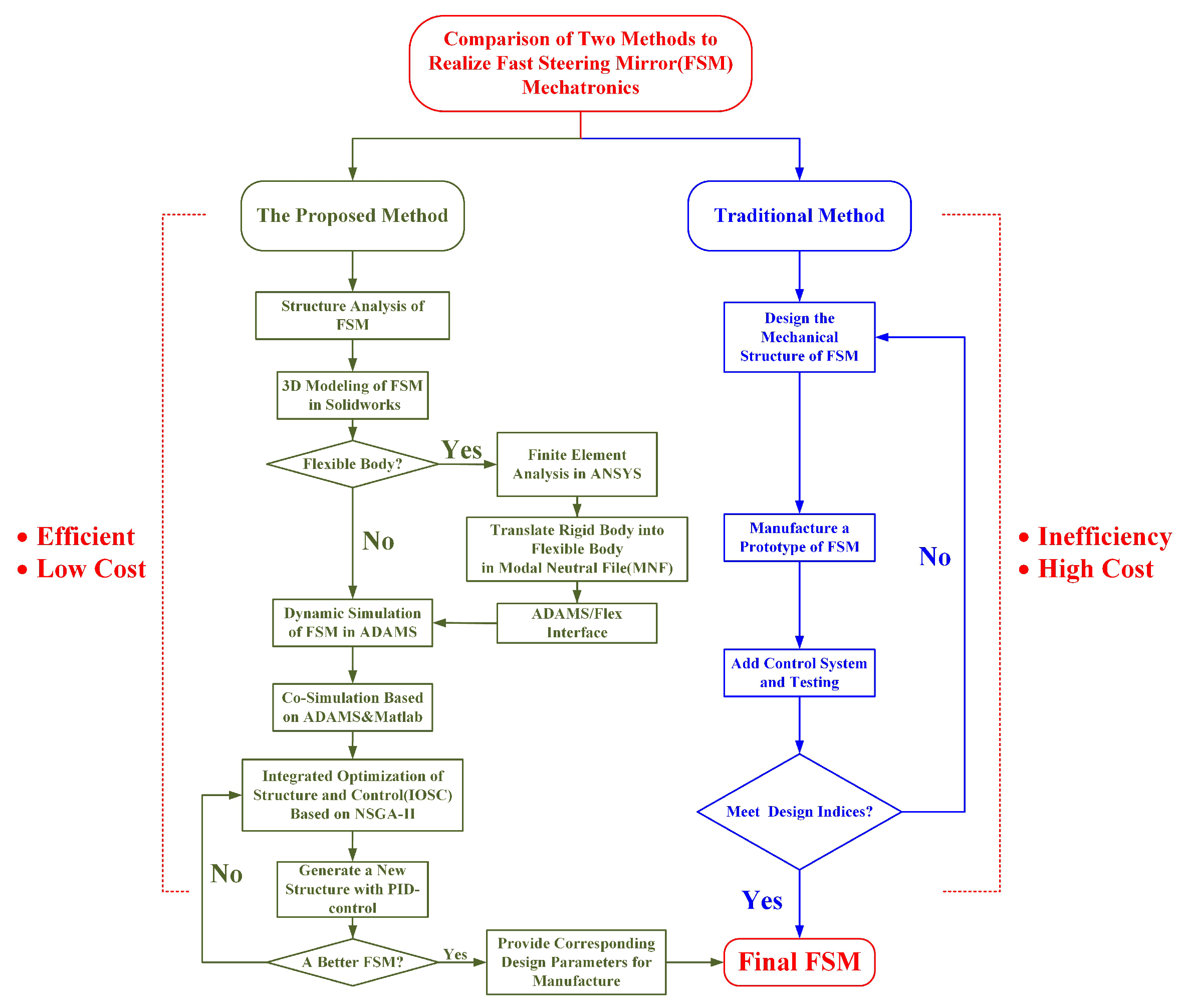
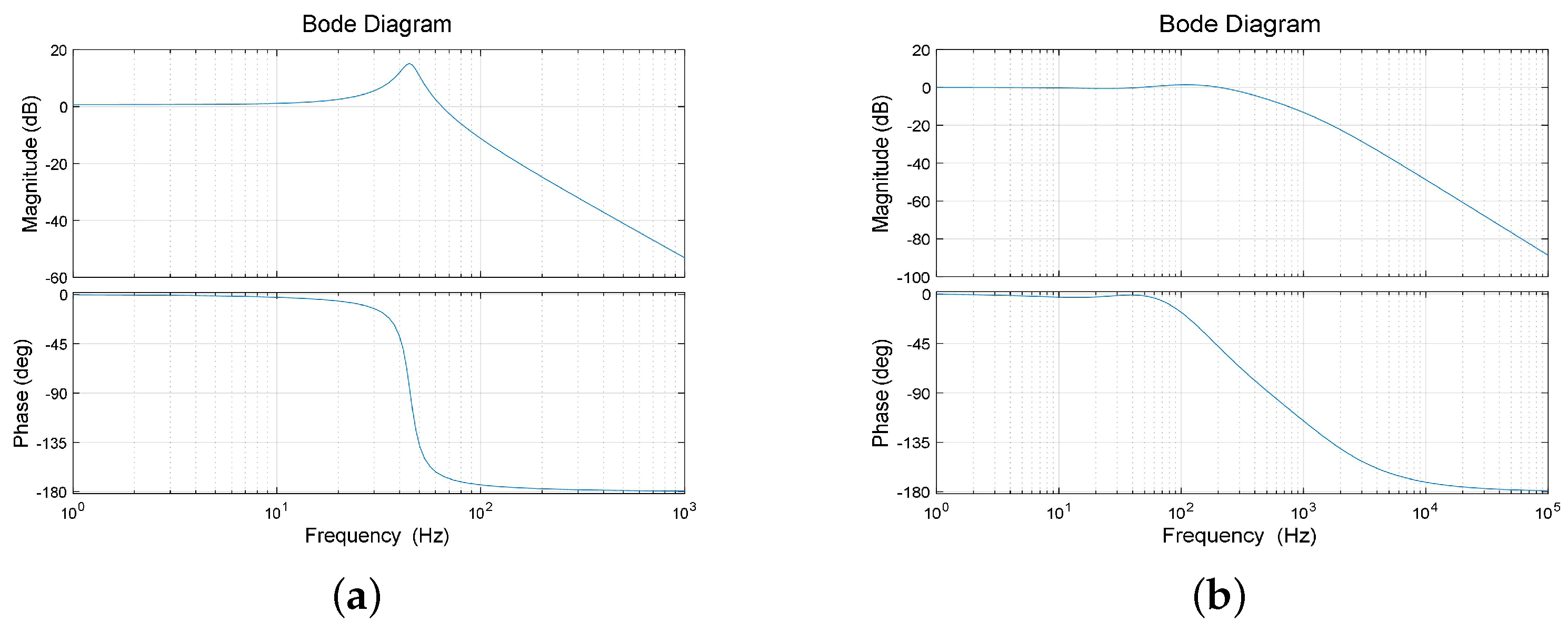
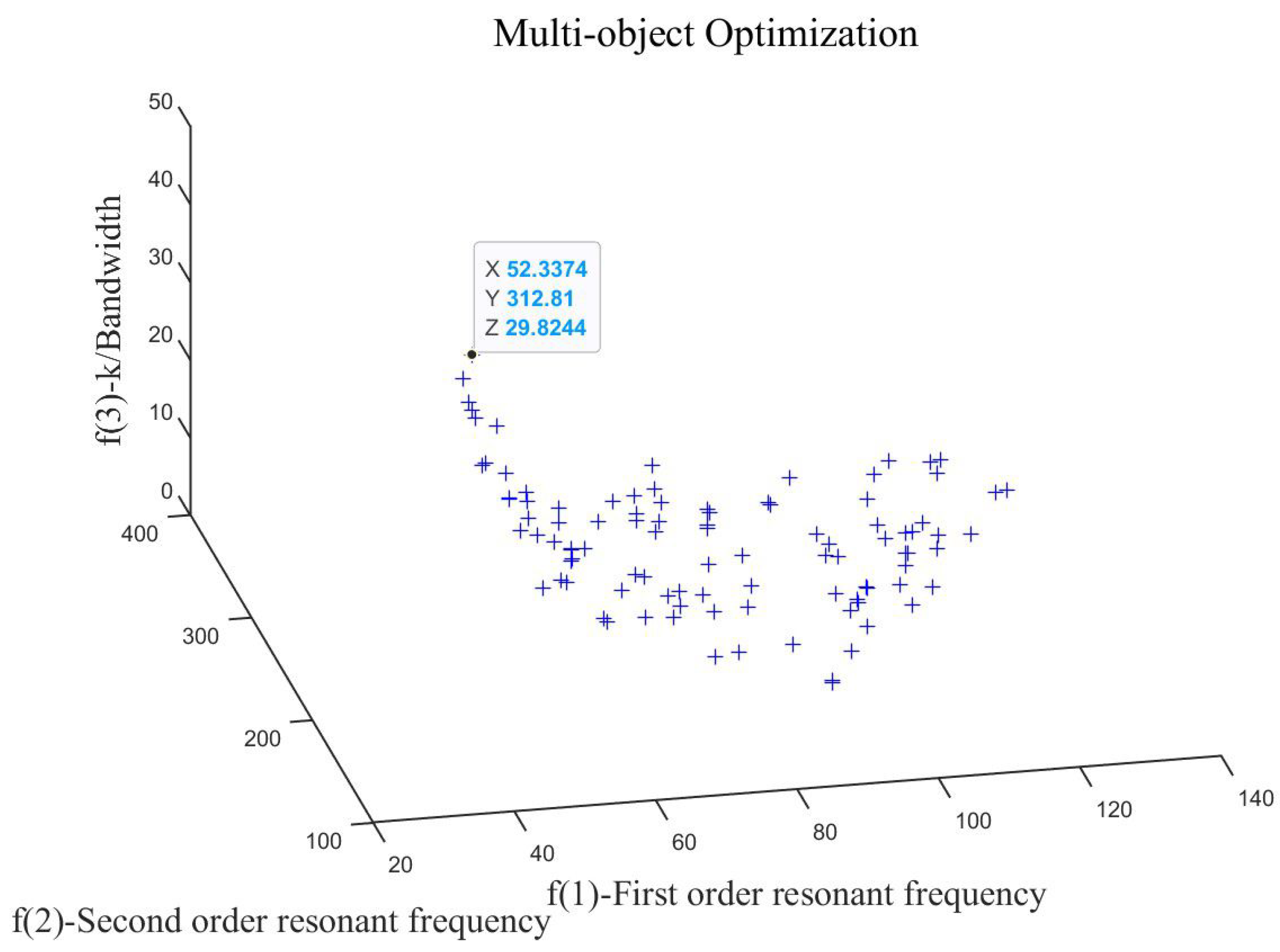
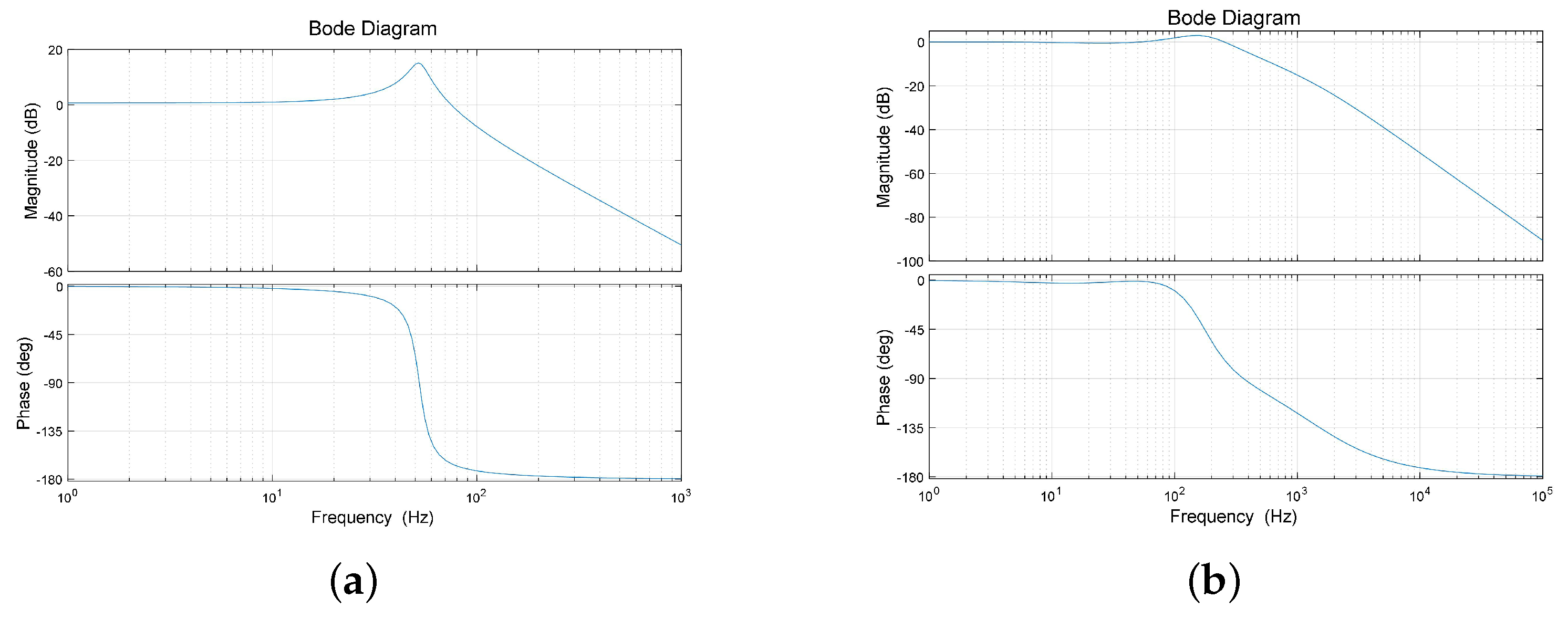
| Property | Simulated Performance |
|---|---|
| FSM Size (Length, Width, Height) | 190 mm, 60 mm, 60 mm |
| Mirror Diameter | 38 mm |
| Angular Range | ±3.9 mrad |
| Repeated Positioning Accuracy | 8 rad |
| Step Response Time | 0.36 s |
| Mode Number | Resonance Frequency (Hz) |
|---|---|
| 1 | 44.925 |
| 2 | 166.984 |
| 3 | 1228.71 |
| 4 | 1498.75 |
| R | t | b | 1st-Order Resonance Frequency | 2nd-Order Resonance Frequency | ||||
|---|---|---|---|---|---|---|---|---|
| Initial FSM | 7.5 | 0.5 | 14 | 7.53 | 847.6 | 0.0167 | 45 | 167 |
| Optimized FSM | 5 | 0.45 | 20 | 8.78 | 886.8 | 0.01 | 52 | 312 |
| Mode Number | Resonance Frequency (Hz) |
|---|---|
| 1 | 52.393 |
| 2 | 321.923 |
| 3 | 2111.67 |
| 4 | 2108.86 |
Disclaimer/Publisher’s Note: The statements, opinions and data contained in all publications are solely those of the individual author(s) and contributor(s) and not of MDPI and/or the editor(s). MDPI and/or the editor(s) disclaim responsibility for any injury to people or property resulting from any ideas, methods, instructions or products referred to in the content. |
© 2024 by the authors. Licensee MDPI, Basel, Switzerland. This article is an open access article distributed under the terms and conditions of the Creative Commons Attribution (CC BY) license (https://creativecommons.org/licenses/by/4.0/).
Share and Cite
Chen, Z.; Duan, Q.; Zhang, L.; Tan, Y.; Mao, Y.; Ren, G. Integrated Optimization of Structure and Control for Fast Steering Mirrors. Micromachines 2024, 15, 298. https://doi.org/10.3390/mi15030298
Chen Z, Duan Q, Zhang L, Tan Y, Mao Y, Ren G. Integrated Optimization of Structure and Control for Fast Steering Mirrors. Micromachines. 2024; 15(3):298. https://doi.org/10.3390/mi15030298
Chicago/Turabian StyleChen, Zijie, Qianwen Duan, Luyao Zhang, Yi Tan, Yao Mao, and Ge Ren. 2024. "Integrated Optimization of Structure and Control for Fast Steering Mirrors" Micromachines 15, no. 3: 298. https://doi.org/10.3390/mi15030298





